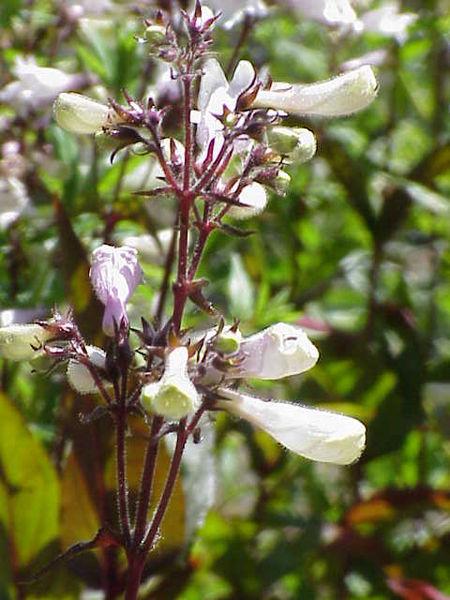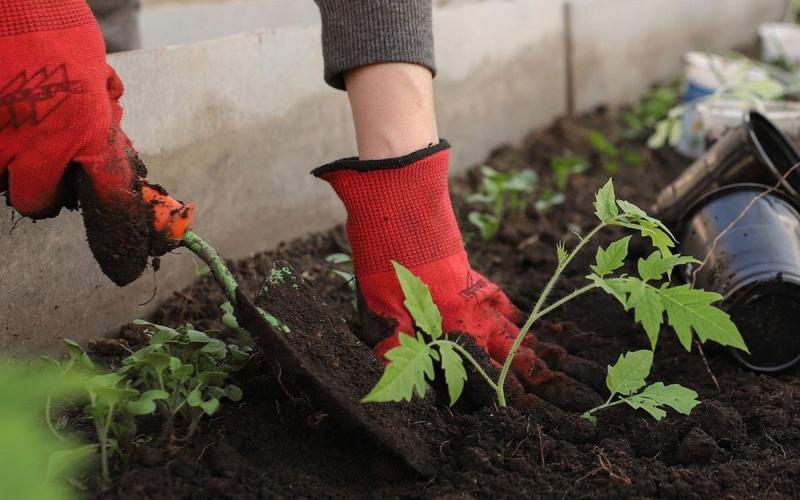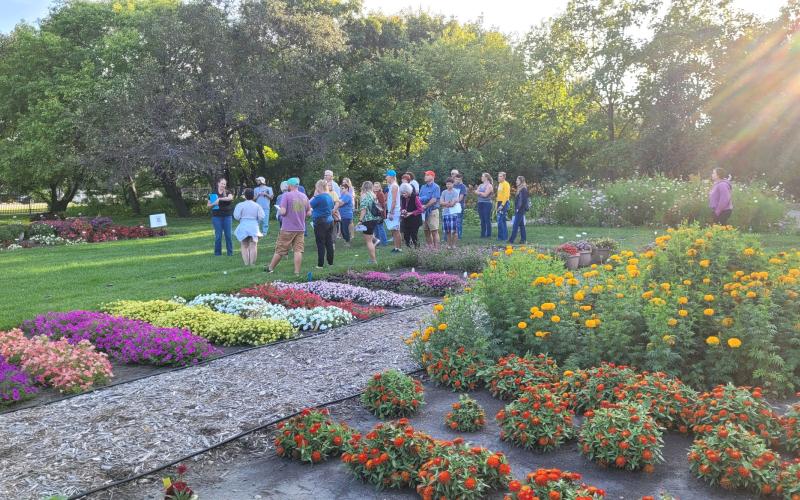Profile

Our first plants to know are members of the genus Penstemon. Penstemon digitalis, also known as smooth white beardtongue or simply penstemon, can be found without too much trouble as the cultivar ‘Husker Red’. The leaves form a dark green (or maroon in the case of ‘Husker Red’) rosette close to the ground and the flower spikes emerge from the middle.
- Scientific name: Penstemon digitalis
- Common names: Mississippi penstemon, Smooth white beardtongue, Talus slope penstemon, Foxglove beardtongue.
- Plant size: 2-3 ft wide, flower stalks up to 4 ft. tall.
- Flower color: white or pink (‘Husker Red’).
- Bloom period: May to July.
- Growing conditions: Sun to part shade, well-drained soil.
- Why you should plant it? Penstemon digitalis is a great plant for bumble bees because of its early bloom period.
Characteristics
The flowers are white and tube-shaped and often have faint blue or purple streaks on the lower petals that act like a runway for bees. Flower stalks may reach 2 to 3 feet in height and can be trimmed back after flowering or they can be left alone and the seeds will mature in the fall.
This penstemon is one of the earlier plants to bloom, usually in June. These early blooms are important food sources for bumble bees and other pollinators that start flying in the spring. Flowering time can be extended by cutting back spent stalks.
Varieties
Penstemon grandiflorus and Penstemon augustfolius are both native to South Dakota. P. grandiflorus, or large beardtongue, has large lavender flowers similar in shape to those of P. digitalis. P. augustifolius, or whorled penstemon, has blue flowers. Both of these species provide pollen and nectar for native bees.
Propagation & Planting
Plants can be divided in the fall or early spring, or you can save seeds in the fall. If you save seeds, plant them in the fall as the winter conditions will help them germinate successfully in the spring.
This species is very attractive when planted in clumps or drifts and the foliage adds interest when flowers are absent. This plant does best in full sun to part shade in well-drained soil.


